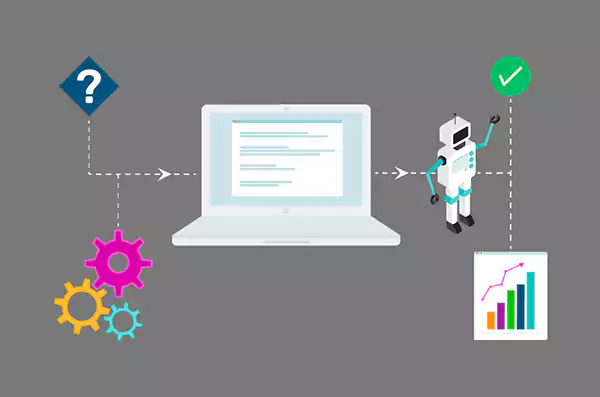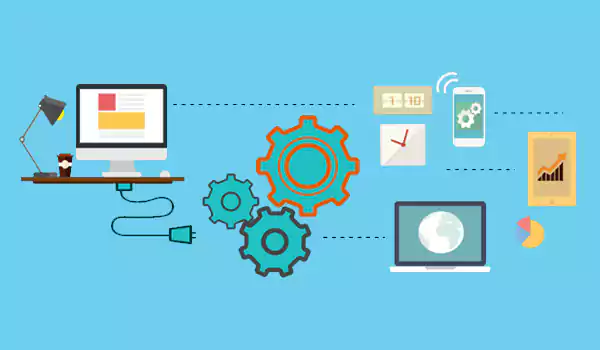Both the technologies, process automation and workflow automation are utilized by organizations to provide more efficient, effective, and accurate functioning of the business. But why is their concept still different from each other?
Hence, in this piece of writing, we will understand the definition of process and workflow automation, identify the similarities, and outline the key differences between them.

In the era of the digital revolution, both mechanisms act as crucial element for companies. While sharing aspects like common objectives of efficiency, collaboration, scalability, etc., they vary in focus, scope, and integration needs. However, by analyzing the diversifications and using suitable approaches for their specific requirements, businesses can leverage automation and drive a huge success.
In a company, process machine control technology and software are utilized to do repetitious, rule-based tasks providing streamlined operations, eliminating the risk of errors, and improvising the overall efficiency of the manual case and transforming it into an automated workflow.
Key characteristics of process automation include:
It focuses on automating routine and repetitive tasks that follow a predefined set of rules or guidelines. These jobs typically involve data entry, data validation, calculations, and data analysis.
It often encompasses end-to-end actions that involve multiple departments or functions within an organization. It aims to optimize the flow of information and tasks across different teams, ensuring a seamless and synchronized operation.
Its solutions integrate with existing software applications, databases, and systems within an organization. This integration facilitates the exchange of data and information between different systems, enabling smooth action execution.
By eliminating manual intervention and automating tasks, it improves capability and reduces errors. It enables faster systems, and higher accuracy, and frees up human resources for more complex and value-added activities.
This machine control focuses on the management and automation of sequential tasks and processes that follow a specific set of steps or stages. It involves designing, executing, and monitoring workflows to ensure smooth task progression, effective collaboration, and timely completion.

Key characteristics of workflow automation include:
It deals with actions that follow a predefined sequence of tasks. It focuses on defining the order and dependencies of tasks, ensuring that each step is completed before moving to the next one.
These systems enable the assignment of tasks to individuals or teams and facilitate collaboration throughout the procedure. They often incorporate notifications, reminders, and communication tools to keep participants informed and engaged.
It provides real-time visibility into the progress of tasks, allowing stakeholders to track the status, identify bottlenecks, and make informed decisions. Reporting features offer insights into key metrics and performance indicators for continuous improvement.
It ensures adherence to organizational policies, regulatory requirements, and compliance standards. Incorporating checks and balances at each stage reduces the risk of errors, omissions, and non-compliance.
While process and workflow automation have distinct focuses, they share several commonalities that contribute to their effectiveness in optimizing operations:

Both approaches driveability by reducing manual effort, minimizing errors, and accelerating work completion. By automating repetitive and sequential jobs, organizations can achieve higher productivity levels and allocate resources more strategically.
Process and workflow automation provides visibility into the status and progress of tasks and procedures. This transparency allows for better monitoring, decision-making, and identification of areas for improvement.
These solutions foster collaboration by assigning tasks, streamlining communication, and enabling information sharing among team members. This promotes cross-functional cooperation and efficient knowledge exchange.
Both approaches offer scalability, allowing organizations to handle increased workloads and accommodate growth without sacrificing quality or efficiency. It can be easily adapted and expanded to support evolving business needs.
Although both automation share commonalities, it is crucial to recognize their fundamental distinctions:
It encompasses a broader range of activities and projects across multiple functions, aiming to automate repetitive processes organization-wide. In contrast, workflow automation primarily targets sequential tasks and emphasizes work management, collaboration, and progress tracking within specific actions.
It focuses on automating individual work within a course, whereas this automation emphasizes the management and optimization of the entire case, including job dependencies, timelines, and approvals.
It often necessitates integrating with various software applications and systems to streamline data exchange and ensure seamless process execution. While these mechanisms may also involve integration, their primary focus is on managing and coordinating jobs within a defined workflow.
It tends to handle more complex cases that involve diverse rules, conditions, and decision points. It requires greater adaptability to accommodate dynamic variations in procedures. Workflow automation typically deals with simpler, predefined workflows that follow a linear sequence of tasks.
We plan our daily activities every week. Similarly, we make annual budgets for major expenses and plan our investments and taxes accordingly. Since we are meticulous about our short-term income and savings, we don’t neglect the bigger picture and periodically align our long-term goals to match our income, investments, and future requirements.
Similarly, adopting only workflow automation and ignoring process automation, is not an ideal way to address a company’s digital needs. Depending on the size and nature of the business, a case may be small or exhaustive.
And every action can be fragmented into several workflows that together will culminate in one big structure. Hence, the requirements are specific to a business and must be tackled accordingly.